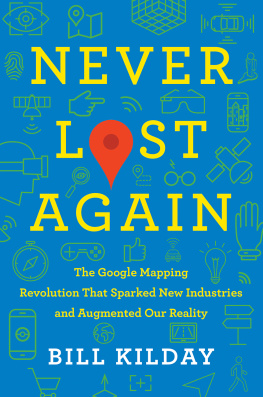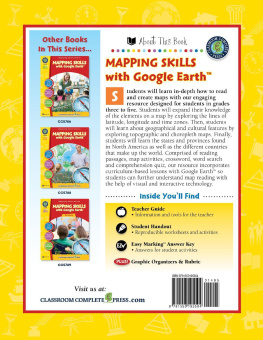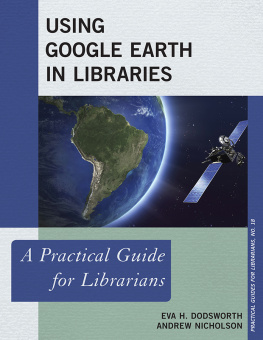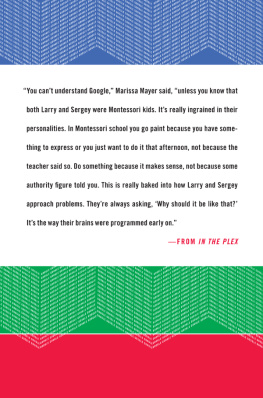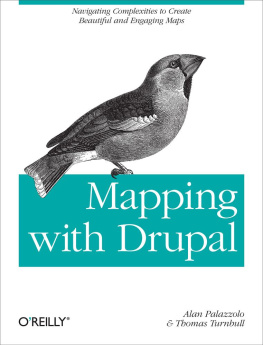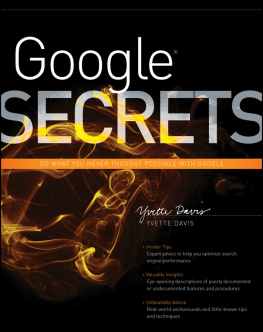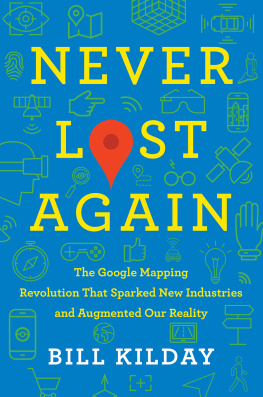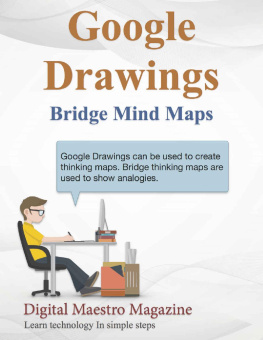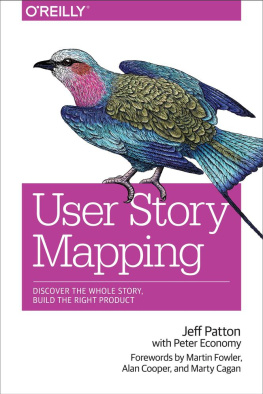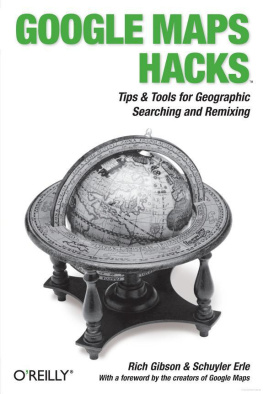Contents
For Shelley.
The S in GPS.
Once a photograph of the Earth, taken from the outside, is available... a new idea as powerful as any in history will be let loose.
Sir Fred Hoyle, British astronomer (1948)
Introduction
Starting Point
Do you remember the last time you were lost? I mean, truly and totally lost?
Personally, I have not been that lost in some time. Id have to go all the way back to the early 2000sto when I was living in Boston, Massachusetts. One cold winter evening, I was driving home from a Tuesday-night pickup basketball game in Brookline. I was exhausted from three hours of rough-and-tumble play with some South Boston Irish guys. Somehow I got turned around on my way home, a route that I had already driven more than a dozen times. I could see where I needed to bejust across the Charles Riverbut I couldnt figure out how to get there.
My wife, Shelley, at home with a screaming baby, had already called twice. Where are you? In frustration, I pounded my fist against my cars dashboard, yelling at nobody but myself, while driving five miles in the wrong direction down Route 2, looking for the next roundabout. Or maybe it was 3A?
From 2000 to 2003, I lived in Bostonand I was frequently turned around. The city was merciless to a transplanted Texan: It was like a foreign language. The locals seemed to take pride in the missing signage, serpentine streets, and roundabouts. You needed to solve a math equation to navigate some intersections. Throw in the Big Digthe $15 billion public works project that aimed to reroute four miles of Interstate 93 directly under the city of Bostonand yeah, I was lost. A lot.
Im not sure I ever did figure it out. Boston, you see, is actually a twisted collection of cities. If you place them on a clock, you would start at twelve oclock with Chelsea, then go clockwise through Revere, Boston (proper), Brookline, Brighton, Newton, Belmont, Cambridge, Somerville, and Charlestown, with a dozen or so smaller cities filling in the gaps. These cities were all at one point independent municipalities, each established in the early to mid-1600s, and connected by a complex system of horse trails.
The way that each of the different cities named trails was quite simple: They named it according to the trails destination. For example, if you lived in Brighton in the 1600s and wanted to ride to Cambridge, you took a horse trail that was marked Cambridge. Similarly, if you lived in Boston and wanted to ride to Cambridge, you also followed a horse trail marked Cambridge.
Fast-forward to modern-day Boston, and you haveIm not making this upat least seven different Cambridge Streets: The names of the now-paved trails in the Boston metro area were often inherited from the names of the original horse trails. I can remember driving along Cambridge Street one day, stopping at a red light, and glancing up at the cross street I was intersecting: It was Cambridge Street!
It took me two and a half years to figure out why, in the Boston metro area, there appeared to be duplicates, quadruplets, septuplets of every street name (assuming you could find a sign). One day I asked my landlord why the roads were still set up in this way, and he answered, So the Yankee fans cant find their way to Fenway when they drive their cahhs up from New York.
Well, that made me feel better.
Ten years later, in 2010, I was on a vacation in Portland, Oregon. I walked through Pioneer Courthouse Square with my family; the landmark public space was alive with people and activity on a crisp summer evening. Following Google Maps on my iPhone, I navigated the half mile down Yamhill Street to a restaurant called Luc Lac Vietnamese Kitchen. My eight-year-old daughter Isabel asked me, Daddy Bill, what did people do before Google Maps?
I thought back to those Boston days. To the nights left to chance and happenstance, like a Yankee fan in Bostons North End before Yelp and OpenTable, before the iPhone and Google Maps. To a world in which I would have never known about a restaurant like Luc Lac (4.5 stars!), and if I had, would have had to stop strangers for directions three different times. I thought back to all those miscalculated turns and premature roundabout exits. And all those restaurants I walked into without (shudder) reading reviews and those hotels booked without (horror) looking at the street-view imagery of the block where they resided.
I looked up from my Google Maps app, slid my iPhone into my vest pocket, smiled at Shelley, and tried to answer.
We got lost a lot, sweetie.
Before 2004, we printed out maps from MapQuest and crammed poorly folded AAA maps in our glove compartments or under our seats. We stopped at gas stations and asked strangers behind bulletproof plexiglass for directions. We asked hotel concierges for dubious restaurant recommendations. And when on vacation, we rented condos that stretched the definition of beachfront. We studied confusing subway maps (Green Line not E). We got lost, we settled for mediocre meals, and we pounded on our dashboards.
But by 2010, a navigation and mapping technology had changed everything forever. And I was there to witness its creationand played my small part.
A friend of mine from the team, Michael Jones, put it to me this way. Think about it: Two hundred thousand years of human beings on Earthand we are the very last generation to ever know what it was like to be lost. And no one after us, no generation to come will ever be lost in the way that every generation before was. All over the world today, people are landing in New York or Tokyo or Cairo or even the Democratic Republic of Congo. Anywhere, they are stepping off of planes in a foreign land, in a place that theyve never been, and guess what, they know where they are. They can find their hotel. Or a restaurant. Or a friends house. Or an office for a business meeting. Or whatever.
He paused, looked at me, and added, And we did that. You and me and everyone that worked at Keyhole and Where2Tech and the Google Maps team. We fixed that!
Back in Portland, I opened the door to Luc Lac on that summer evening, knowing already it was the perfect restaurant. I knew it was open, I had prescreened the menu, and I had navigated there with ease, thanks to the Google Maps app on my iPhone. I knew it wasnt going to be too fancy or too expensive.
Shelley passed me with a knowing grin on her face. She remembered our Boston days. She remembered how it all came to bethe technology that changed our lives forever. And now she was also one of its billion monthly users.
Keyhole started, barely, in 1999. It ran out of cash, essentially, in 2002. It was resuscitated by CNN and In-Q-Tel (the venture capital arm of the CIA) in 2003. And by 2004, it was bought by another five-year-old company.
That company was Google.
Google bought two mapping companies that year: a four-person team working out of an apartment in Sydney that had not yet even incorporated as a business; and a twenty-nine-person company in California, called Keyhole, for which I served as marketing director.
In the fall of 2004, Google combined those two teams with a small group of existing Google employees in Building 41 in the Googleplex in Mountain View, California, gave them zero direction, unlimited resources, and presented the teams with a secret problem: Twenty-five percent of all queries being typed into the simple white Google search box were looking for a map.
And guess what? Google had no map.
Searches like best margarita, Austin, hotel in New Orleans, heart attack near zip code 78636 were representing a significant share of all Google traffic. As late as January of 2005, if you entered those searches looking for a location or directions on the Google home page, Google returned a list of ten website links, with a

